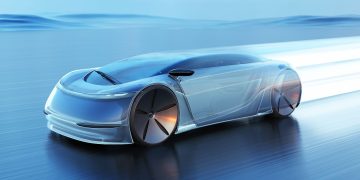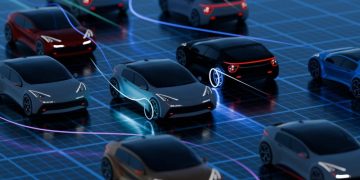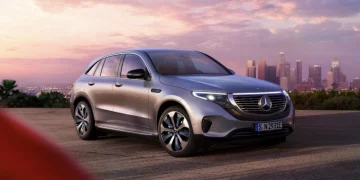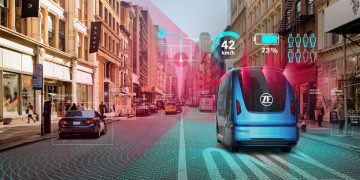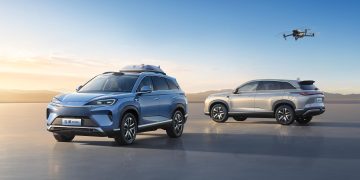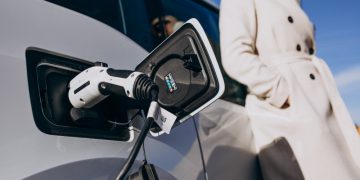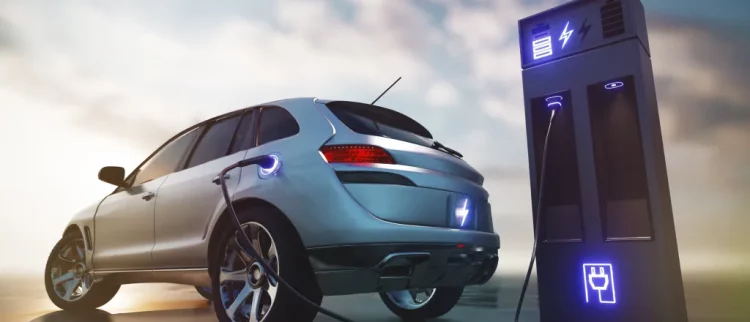Introduction: A Global Shift Towards Electric Vehicles
In recent years, the global automotive industry has witnessed a significant transformation. The growth of electric vehicle (EV) sales has been one of the most notable trends, signaling a shift away from traditional combustion engine vehicles toward a more sustainable future. EVs, once a niche market for early adopters and environmentally-conscious consumers, have now reached mainstream status. This rapid growth is not an isolated trend but rather a global phenomenon, driven by a combination of factors including government policies, technological advancements, public awareness, and evolving consumer preferences.
The growth of electric vehicle sales is not just a response to consumer demand but a larger movement towards cleaner, more sustainable transportation. As governments across the world tighten emissions regulations and push for a cleaner, greener future, consumers and automakers alike are making significant investments in electric mobility. From policy incentives to the continuous evolution of EV technology, multiple drivers are at play in accelerating the adoption of electric vehicles.
In this article, we will explore the primary factors driving the growth of electric vehicle sales worldwide, including the role of government incentives, technological breakthroughs, shifts in consumer awareness, and other significant influences shaping the EV landscape.
Government Incentives: Fueling the Transition to Electric Vehicles
1. Subsidies and Tax Credits
One of the most significant drivers behind the growth of electric vehicle sales is government support in the form of subsidies, tax credits, and rebates. As governments around the world work to reduce carbon emissions and combat climate change, they have introduced a variety of incentives to make electric vehicles more affordable for consumers. These incentives can significantly reduce the initial cost of purchasing an electric vehicle, making them more accessible to a broader range of buyers.
For instance, countries like the United States, the United Kingdom, and China have introduced various tax breaks and subsidies for electric vehicle buyers. In many cases, the federal and state governments offer rebates ranging from a few thousand dollars to tens of thousands, depending on the region and specific policies. These financial incentives have made EVs much more attractive to price-sensitive consumers who might otherwise have been hesitant to purchase an electric car.
2. Zero-Emission Mandates and Emission Reduction Targets
In addition to providing direct financial incentives, governments are also implementing regulations that require automakers to reduce emissions from their vehicle fleets. In many parts of the world, particularly in Europe, governments have set strict emission reduction targets that compel automakers to increase the share of zero-emission vehicles in their portfolios. These mandates have pushed car manufacturers to invest heavily in EV development and production, further driving the growth of electric vehicle sales.
In the European Union, for example, regulations are in place that mandate automakers to meet strict emissions standards. For manufacturers who do not meet these targets, significant fines can be levied, which serves as a strong incentive to invest in electric vehicles. Similarly, countries like China and India have set ambitious goals for EV adoption, with specific targets for the number of electric vehicles on the road by certain dates.
3. Infrastructure Investment
Another critical aspect of government policy is the investment in charging infrastructure. Public and private sector collaboration has led to the rapid expansion of EV charging networks, making it easier for consumers to adopt electric vehicles. Governments are subsidizing the installation of public charging stations in urban areas, highways, and even remote regions, addressing one of the most significant barriers to EV adoption: range anxiety.
In many countries, governments are also incentivizing businesses and homeowners to install charging stations, making it more convenient for EV owners to charge their vehicles at home or at work. The development of a robust and accessible charging infrastructure has played a pivotal role in supporting the growing adoption of electric vehicles.
Advancements in Technology: Enhancing the Appeal of EVs
1. Improved Battery Technology
The continued advancement of battery technology has been a key factor in driving the growth of electric vehicle sales. Historically, the limited range and long charging times of electric vehicles were significant barriers to widespread adoption. However, over the past decade, there have been significant breakthroughs in battery technology, particularly in the development of lithium-ion batteries.
New advancements have led to batteries that are not only lighter and more energy-dense but also less expensive to produce. As battery costs have fallen, the overall price of electric vehicles has become more competitive with traditional vehicles. Additionally, the improvements in battery efficiency have allowed EVs to achieve longer ranges on a single charge, alleviating concerns about limited driving distance and making electric vehicles more practical for everyday use.
2. Faster Charging Technology
Alongside battery improvements, the development of faster charging technologies has helped to make electric vehicles more user-friendly. With the introduction of ultra-fast charging stations, drivers can now recharge their EVs in a matter of minutes, compared to the hours it once took to fully charge an electric vehicle.
As charging times continue to decrease and charging networks expand globally, the convenience factor of EV ownership has significantly improved, contributing to the rise in sales. Fast-charging technology has made EVs a viable option for long-distance travel, removing one of the main deterrents to EV adoption and enhancing their appeal to a wider range of consumers.
3. Enhanced Vehicle Performance
Electric vehicles are increasingly recognized for their superior performance compared to traditional gasoline-powered cars. EVs offer instant torque and smooth acceleration, providing a driving experience that many consumers find more enjoyable. The absence of an internal combustion engine results in a quieter and smoother ride, making EVs particularly attractive in urban environments where noise pollution is a concern.
Additionally, the technological innovations that come with electric vehicles, such as advanced infotainment systems, autonomous driving capabilities, and connectivity features, have made EVs even more appealing to tech-savvy consumers. As technology continues to evolve, the performance and features of electric vehicles will only continue to improve, making them even more competitive in the automotive market.
Rising Consumer Awareness and Changing Preferences
1. Growing Environmental Awareness
One of the most significant factors driving the growth of electric vehicle sales is the increasing awareness of environmental issues. As climate change becomes an increasingly pressing global issue, consumers are becoming more conscious of the environmental impact of their transportation choices. Electric vehicles, with their zero tailpipe emissions, offer a direct way for individuals to reduce their carbon footprint and contribute to environmental sustainability.
The growing awareness of air pollution, particularly in urban areas, has also played a role in pushing consumers towards electric vehicles. With traditional internal combustion engine vehicles contributing significantly to air quality issues, EVs are being seen as a cleaner alternative that can help improve public health and reduce the overall environmental impact of transportation.

2. Health and Social Responsibility
Consumers are not only concerned about the environment but also about their health and the well-being of their communities. As urban areas become more congested, noise and air pollution from gasoline-powered vehicles have become major concerns. Electric vehicles offer a solution to these issues by providing a quieter, cleaner mode of transportation. Many consumers are choosing to invest in EVs not only for environmental reasons but also to contribute to healthier, more livable cities.
Additionally, electric vehicle adoption aligns with a broader social responsibility trend where consumers are increasingly making purchasing decisions based on ethical considerations. The desire to support sustainable and eco-friendly products has fueled the demand for electric vehicles, as more individuals seek to reduce their impact on the environment.
3. Changing Consumer Preferences in the Automotive Industry
The shift in consumer preferences is also driven by the changing attitudes of younger generations towards car ownership and mobility. Younger consumers, particularly millennials and Gen Z, are more likely to prioritize sustainability when making purchasing decisions. They are also more inclined to embrace new technologies and innovations, making electric vehicles an appealing choice.
Moreover, younger consumers are often more open to alternative mobility options such as car-sharing and subscription models, which are being integrated into the electric vehicle market. These changes in consumer behavior are influencing automakers to adapt and expand their offerings to meet the evolving needs of the market.
Competitive Pressure and Market Dynamics
1. The Role of Traditional Automakers
Traditional automakers, once slow to adopt electric vehicle technology, are now aggressively entering the EV market in response to growing consumer demand and the tightening of emissions regulations. Established companies like Volkswagen, Ford, and General Motors have announced plans to invest billions of dollars in electric vehicle development and production. These companies are also shifting their production lines to meet the growing demand for EVs, further contributing to the overall growth of electric vehicle sales.
The entry of these major players into the electric vehicle market has led to increased competition, driving innovation and improvements in EV technology. As more automakers release electric models, consumers have more choices and competitive pricing, making it easier for them to find an EV that suits their needs and preferences.
2. The Role of New Entrants and Startups
In addition to traditional automakers, new entrants into the EV market, such as Tesla, Rivian, and Lucid Motors, are disrupting the industry. These companies are offering innovative electric vehicles that push the boundaries of performance, design, and technology. Tesla, in particular, has played a significant role in popularizing electric vehicles and shaping consumer perceptions of what EVs can offer.
The rise of these new entrants has forced traditional manufacturers to accelerate their own electric vehicle development and focus on differentiating their products. This competition benefits consumers by providing more options and driving innovation across the industry.
Conclusion: A Bright Future for Electric Vehicles
The rapid growth of electric vehicle sales worldwide is being driven by a combination of government incentives, technological advancements, rising consumer awareness, and competitive market dynamics. As these factors continue to evolve, the electric vehicle market is set to expand even further, reshaping the global automotive landscape.
For consumers, the benefits of electric vehicles are clear: they offer a cleaner, more sustainable mode of transportation with lower operating costs, improved performance, and advanced technological features. As governments invest in infrastructure and automakers continue to innovate, the adoption of electric vehicles will likely continue to rise, accelerating the global transition to a more sustainable transportation future.



